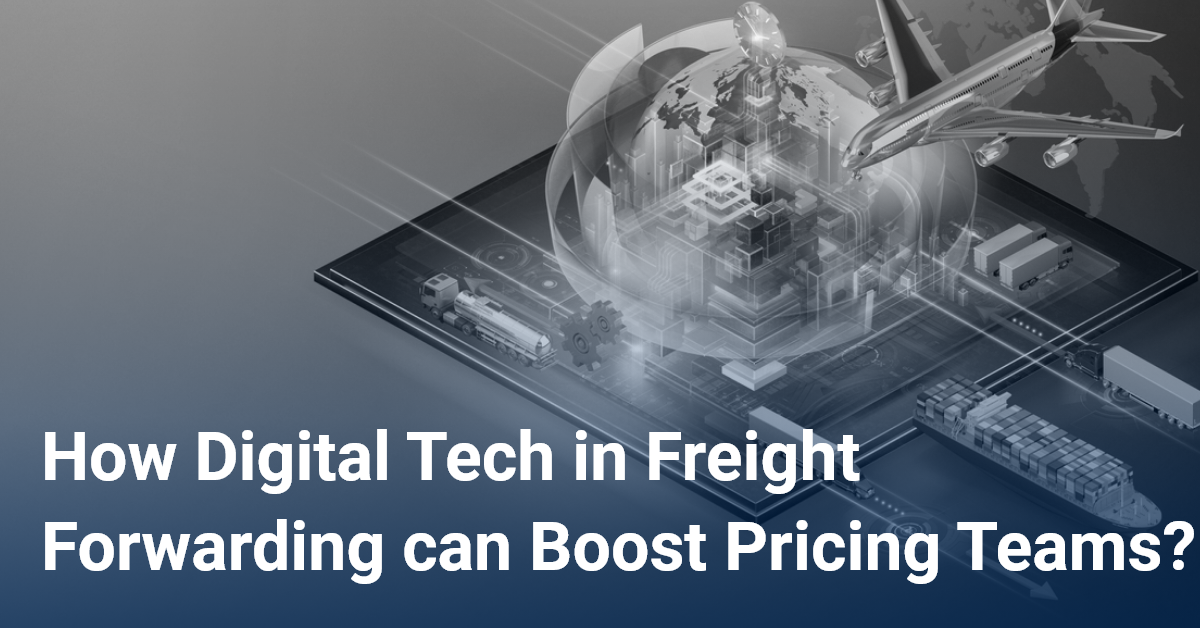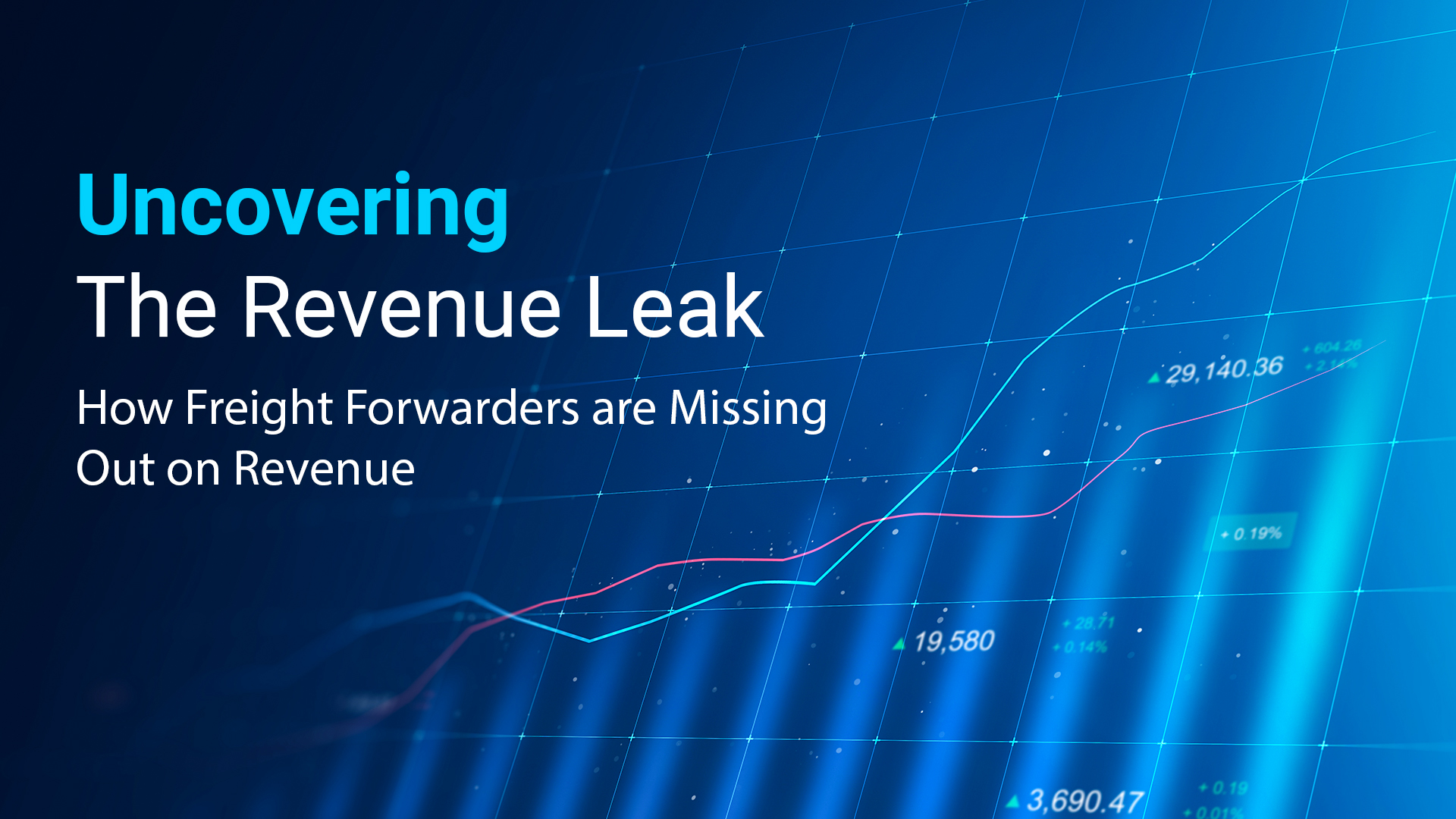The pricing team steers the success of a freight forwarding business and remains its backbone. For a forwarding business to remain competitive, the pricing team is expected to be agile and meticulous. They must also know how to quote appropriately – not so low that they run into losses, nor so high where they lose clients to the competition.
This blog weaves through the roles, responsibilities, pain points, and pressures that a pricing team at a forwarding company faces in the 21st century.
What's in this article?
- What is the typical role of a pricing team in the forwarding market?
- Which stakeholders do the pricing teams interact with for data transfer?
- Why is the role of the pricing team important?
- What does the traditional pricing process constitute?
- What are the pain points for the pricing analyst in the traditional system?
- What are the benefits of digitally transforming the pricing process?
- Digitalized pricing processes - the Freightify way
- Data authenticity - the sophisticated functionality
- Instant quotations - the need of the hour
What is the typical role of a pricing team in the forwarding market?
In a typical freight forwarding organizational structure, the pricing team remains in the back office, supporting the sales team to pitch and win business.
They can be seen as an extension of the sales team.
Their primary responsibility is to create quotations for customers or shippers.
To be able to manage this task seamlessly, they assimilate multitudes of data that showcase liner pricing and surcharges across various channels.
They must also have exposure to trends in the market and be able to advise on the most suitable pricing strategy to implement.
Their expertise in deciphering pricing complexities around the world is what brings customers to the forwarding agent rather than directly dealing with a liner.
There are multiple methods to quote freight rates and value-added costs.
From a penetration pricing approach to skimming or even a simple cost-plus-profit model, the freight forwarder’s pricing team is expected to make the best call for both the customer and the forwarding company.
These teams are also expected to monitor their price effectiveness, given that freight rates could drastically change within a matter of days, especially in this volatile market.
Which stakeholders do the pricing teams interact with for data transfer?
The pricing team is expected to remain connected with various stakeholders within the company and in the outside market.
Their interaction with the sales team or field agents is the foundation for the rest of the freight forwarding business.
Their pricing models need to be validated by senior leadership through various reporting schedules.
Similarly, outside their organization, they need to maintain cordial working relationships with liners and carriers to gain access to freight rates, routes, and schedules.
To keep up with industry trends and remain viable, pricing teams also need to be aware of how their competition quotes.
Why is the role of the pricing team important?
In simple words, the pricing team is expected to suggest the most economical option for a shipper, while maintaining a suitable level of profitability for the freight business.
It is about finding the optimum balance in this cost-sensitive and fast-paced market.
This could be achieved through premium pricing schemes or penetration pricing models.
The underlying assumption here is that the quality remains constant in either choice.
The market share in the freighting business is fragmented across multiple small and medium-scale digital forwarders who are easy to access.
In order to retain customers or win new customers, optimum prices combined with industry knowledge are the key.
McKinsey’s industry study shows that pricing within the logistics industry is less sophisticated when compared to other industries.
It is also the lever with the highest impact on profitability.
As all quotes for shippers are created by the back-end pricing team, they can single-handedly drive the direction of the digital forwarder.
The higher the quoted price proposed, the smaller the number of customer conversions, which is coupled with reduced revenue or sales.
If the suggested quotes are on the lesser side, there could be a high chance that the profit margin could be thin, and profit would be reduced.
What does the usual pricing process involve?
Typically, the pricing team waits in the back office for sales teams or field agents to return back with sales inquiries.
Based on the customer’s requirements, they research multiple routes and schedules across various liners to find the best possible fit for the cargo’s movement.
They then translate the costs from the liner along with the surcharges into a quote that the customers can easily understand.
This process could take anywhere between six to seven hours for a single inquiry.
In order to draw up the completed quote for a customer, they skim through many contracts with liners and refer to online SPOT rates with various carriers.
They refer to multiple databases that store rates and routes in many formats and are expected to decode this information accurately.
It is important to note that even in a traditional forwarding business, the role of the pricing team is not vastly different from what is expected from them today.
However, the method or intensity of their involvement has drastically changed with the onset of technological advancements and varying business demands.
What are the pain points for the pricing team in the traditional system?
It is obvious that the processes that pricing teams traditionally follow are manual, tedious, time-consuming, and prone to errors.
However, the pricing team's pain points in their daily operations do not stop here.
Data sets that pricing teams refer to while creating their quotes come in various formats, currencies, and through many mediums of communication.
While working with multiple excel sheets in a manual environment, the risk of errors or omissions is inherent.
Additionally, the large volumes of information that pricing teams receive may not be readable or comprehendible without some basic analysis and data cleaning.
It is painstakingly difficult to manually organize the data multiple times a day while parallelly working on quotation submission deadlines that customers demand.
Costing in the ocean freight industry is not straightforward. While the basic freight cost is volatile, the more complex surcharges and added value costs fluctuate depending on cargo, destination, services, or route.
Pricing teams also have to be wary of time delays that the usual process is prone to.
They need to incorporate the time factor into the quote, as there are high chances for a spot rate to change between the quote creation and quote acceptance stages.
Considering the importance that the pricing team holds within the forwarding business structure, it is vital to ease out their manual dependencies and digitally transform their operations.
What are the benefits of digitally transforming the pricing process?
The benefits that come with digitalization are aplenty – from secure data storage to protected data transfer, from smart data retrieval to standardized processes, from expert analytical functions to proficient data management.
In a world where the pricing team is heavily reliant on time-sensitive large data in the form of figures and numbers, digitalizing the operations mitigates numerous risks.
A conscious and staggered digital transformation schedule can give pricing teams the time to adapt to the new normal and benefit from instantaneous results.
The most noticeable benefits of digitalizing the pricing process would include reduced turn-around times, increased accuracy, faster communication, and smoother data handling.
Digitalized pricing processes - the Freightify way
The Freightify platform supports small and medium-scale freight forwarders with technical know-how and insights. It nullifies the manual dependency that is currently marring the pricing process.
Digitalization can overcome all the downsides of delayed processing time, error rates, and data handling.
Further, data will remain protected when in a trusted environment.
The Freightify solution offers automated rate sheet conversions. It also gives access to a variety of live ocean rates and schedules through the Rate Procurement Tool.
Rates can be managed in a centralized database through the Rate Management System.
Finally, through the Instant Quote tool, pricing teams can have automated rules for adding margins and creating quotes, thereby reducing the room for error and increasing efficiency.
Data authenticity - the sophisticated functionality
Business operations can be efficient if built on clean and updated information.
Other advancements like big data analytics, API integrations, enhanced forecasting, automated booking, and instant updates can allow forwarding businesses to remain adaptable in this unstable industry.
Providing customers and other stakeholders with transparent data has been at the forefront of forwarders’ concerns. Forwarders currently struggle with technology implementation and integration to accomplish this.
The existing pricing software is not scalable and flexible.
This can be overcome with Freightify product suite which can easily be integrated with the existing ERP, TMS or even RMS systems of forwarders, enhancing their data quality and data accessibility velocity.
Instant Quotations - the need of the hour!
An automated, digital process that could provide instant quotes would significantly improve the speed and efficiency at which a shipper could secure freight space, allow them to get ahead of the curve, and save time, money, and effort.
It brings standardization into the process and cuts down on processing time.
The ultimate aim of these technological advancements is to help increase market share, build a larger customer base, and maintain a profitable business.
For a forwarding business, digitalizing and automating this key step of quote creation will increase their accuracy rate, mitigate risks, and build a more structured business that can survive the digital world and meet today’s demands.













